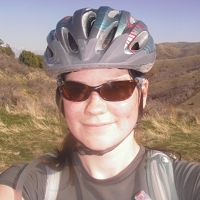Weber et al., 2014
Bacterial composition of soils in ponderosa pine and mixed conifer forests exposed to different wildfire burn severity
Weber C.F., Lockhart J.S., Charaska E., Aho K., Lohse K.A. (2014)
Soil Biology and Biochemistry 69: 242-250 Cross-CZO
-
Catalina-Jemez, GRAD STUDENT
-
Reynolds, INVESTIGATOR
Abstract
Soil microbial communities influence the rate and trajectory of ecosystem recovery after wildfire, but how their composition varies with burn severity in different vegetation types is largely unknown. This study utilized high throughput amplicon sequencing of a bacterial 16S rRNA gene fragment to determine the bacterial community composition in soils that were unburned, moderately burned (“low burn”) and severely burned (“high burn”) in ponderosa pine (‘P’) and mixed conifer (‘M’) forests, three months after the Las Conchas fire (New Mexico, USA; July 2011). Community composition was distinct in unburned M and P soils, but it was similar in high burn soils, despite differences in initial and post-burn M and P soil parameters (i.e. pH, moisture, organic matter, carbon and nitrogen content), which are known to correlate with shifts in bacterial community composition. Richness tended to be lower in the high burn M soils relative to unburned M soils, while it was similar across all P soils. Collectively, our findings indicate that high burn severity may result in bacterial communities shifting to similar compositions within a few months post-fire, even if the initial communities, as well as initial and post-burn soil physical and chemical properties are distinct.
Highlights
- Soil properties varied differentially with burn severity in two vegetation types.
- Richness varied differentially with burn severity in two vegetation types.
- Composition was distinct in two unburned soils but similar in high burn soils.
- Specific taxa present may better predict fire response than overall composition.
Citation
Weber C.F., Lockhart J.S., Charaska E., Aho K., Lohse K.A. (2014): Bacterial composition of soils in ponderosa pine and mixed conifer forests exposed to different wildfire burn severity. Soil Biology and Biochemistry 69: 242-250. DOI: 10.1016/j.soilbio.2013.11.010
 This Paper/Book acknowledges NSF CZO grant support.
This Paper/Book acknowledges NSF CZO grant support.
Explore Further


